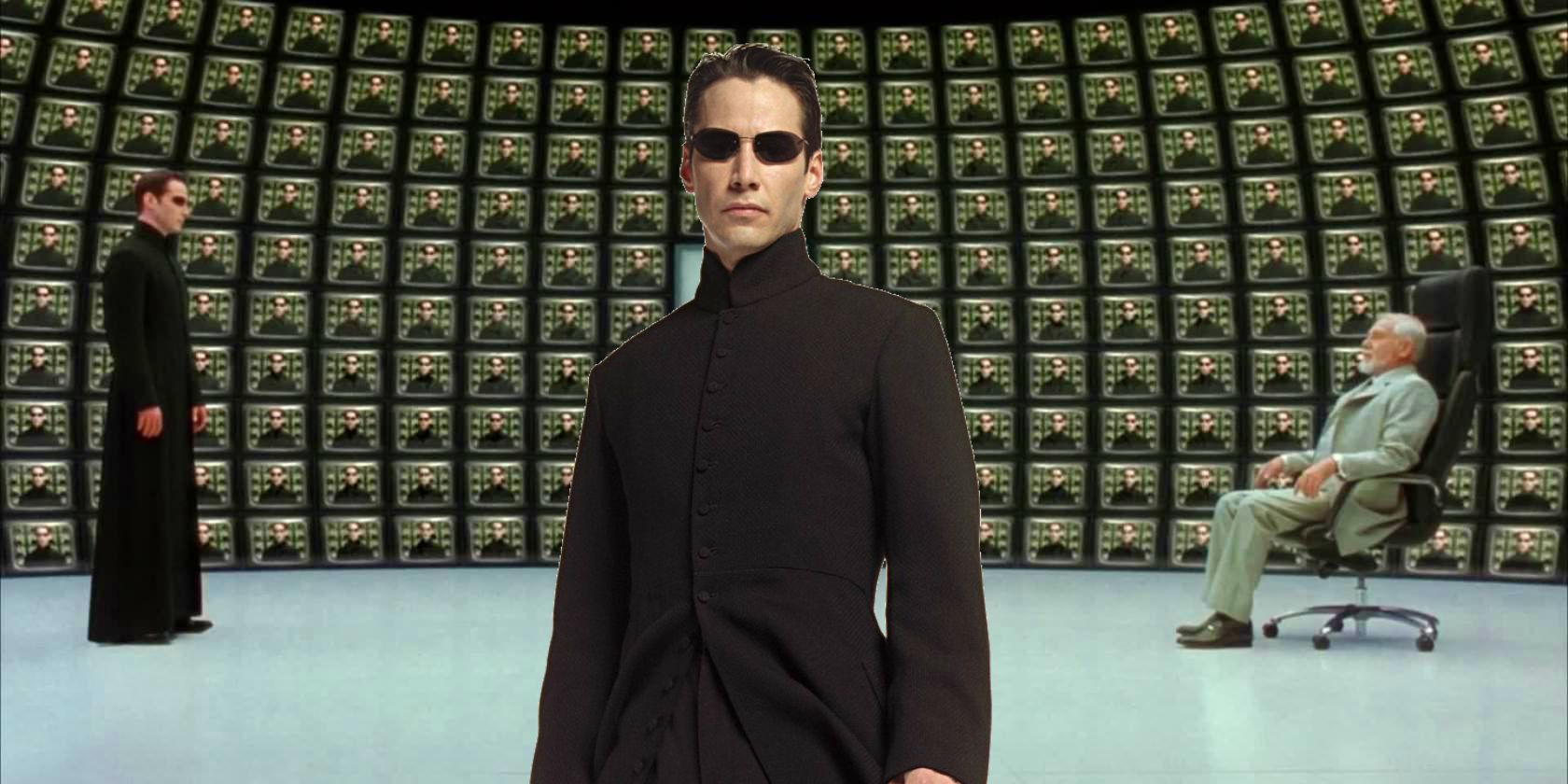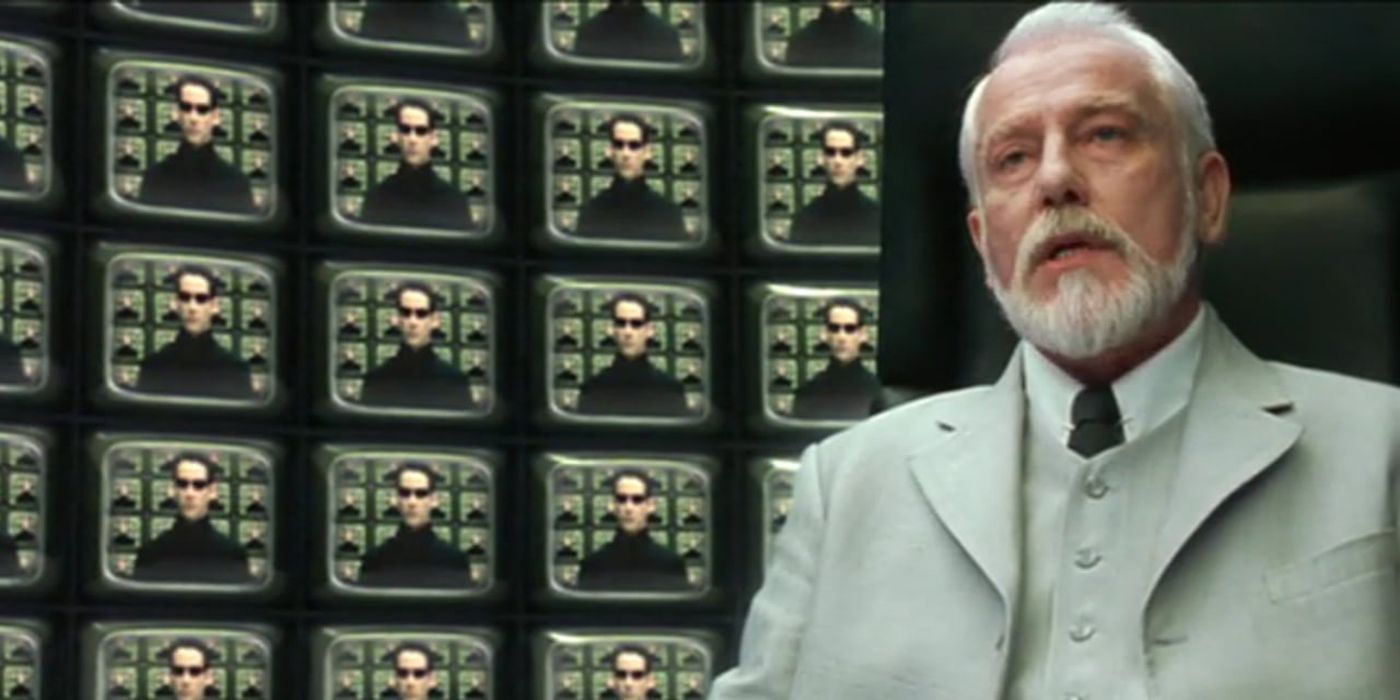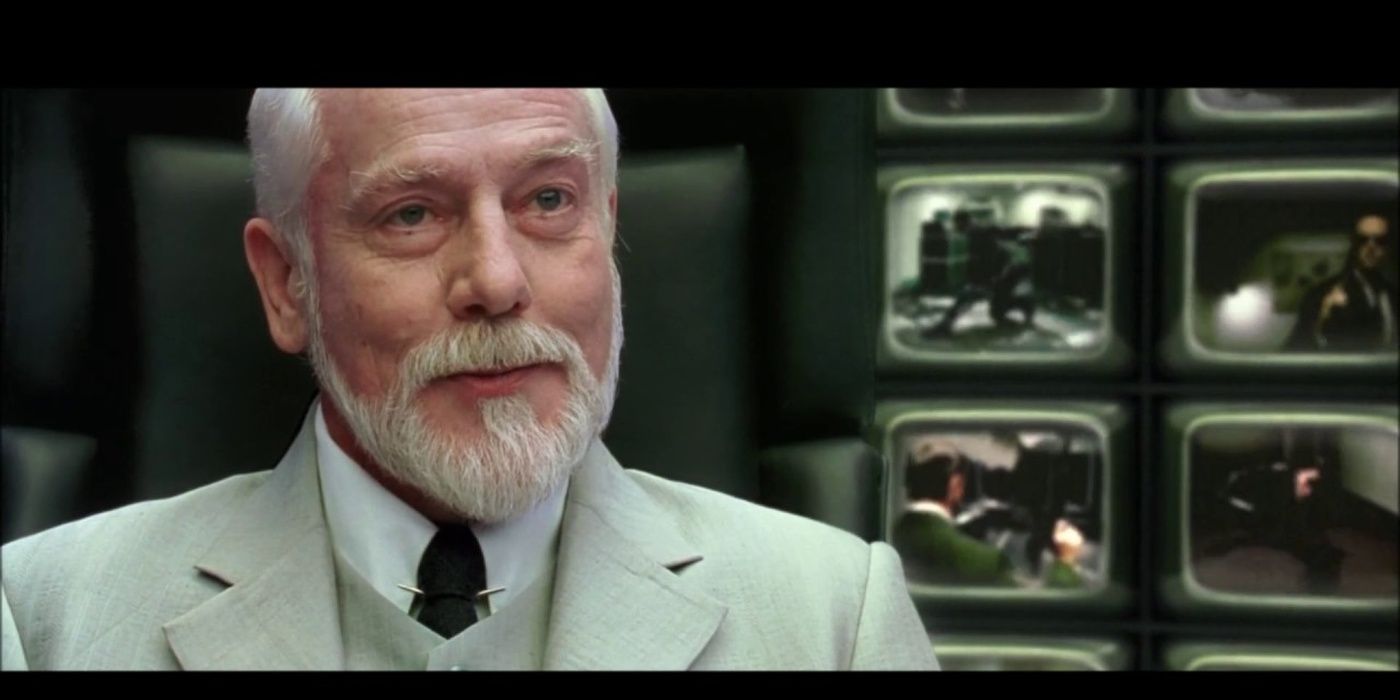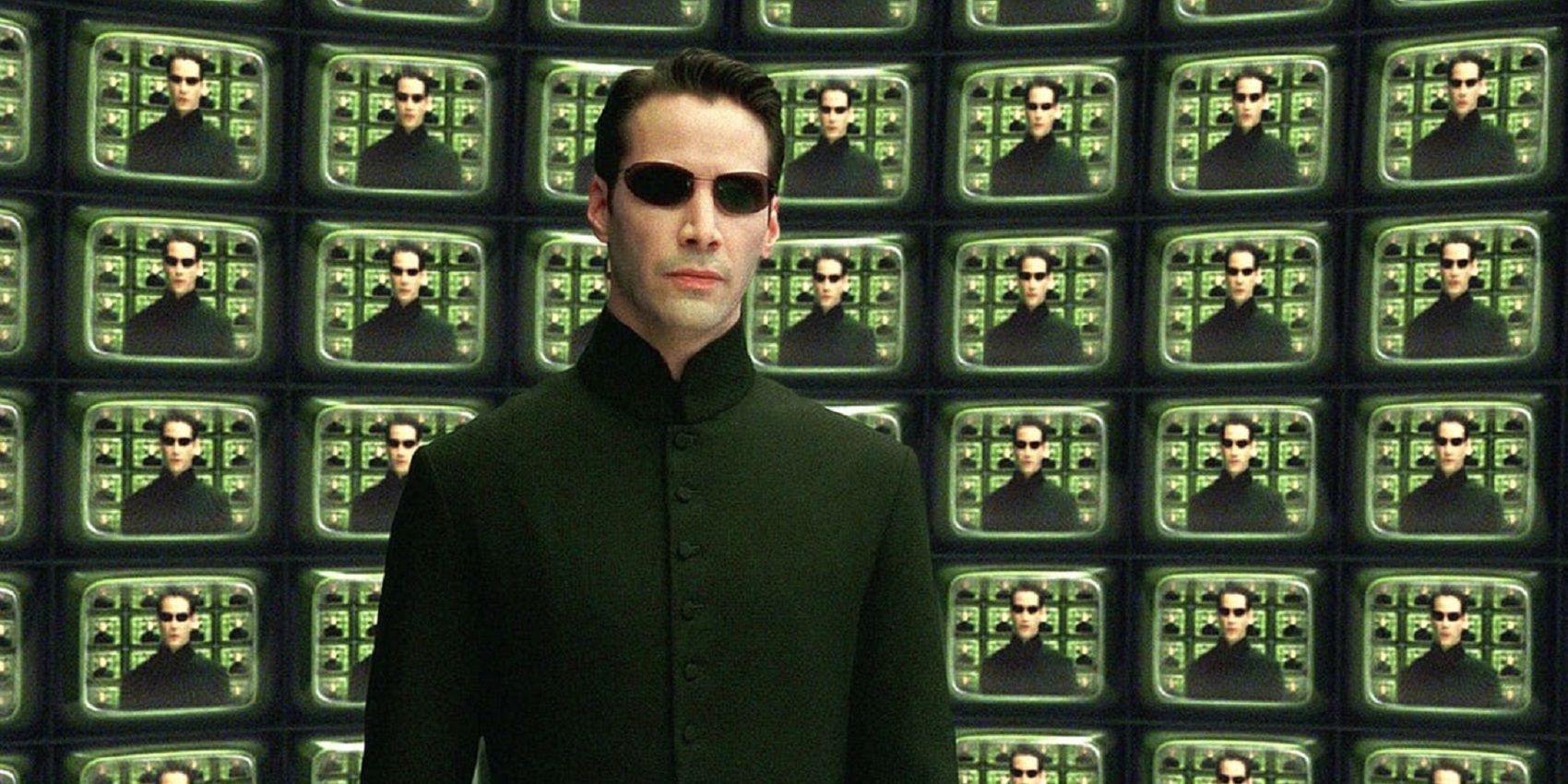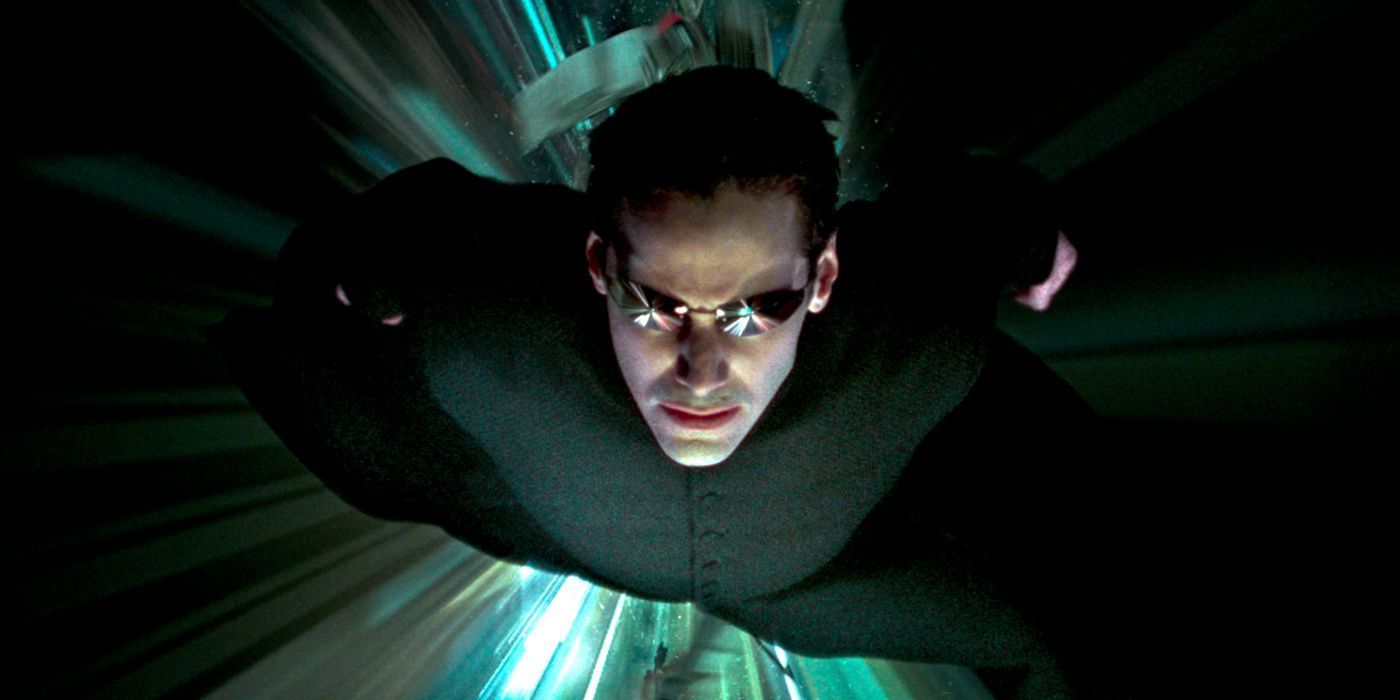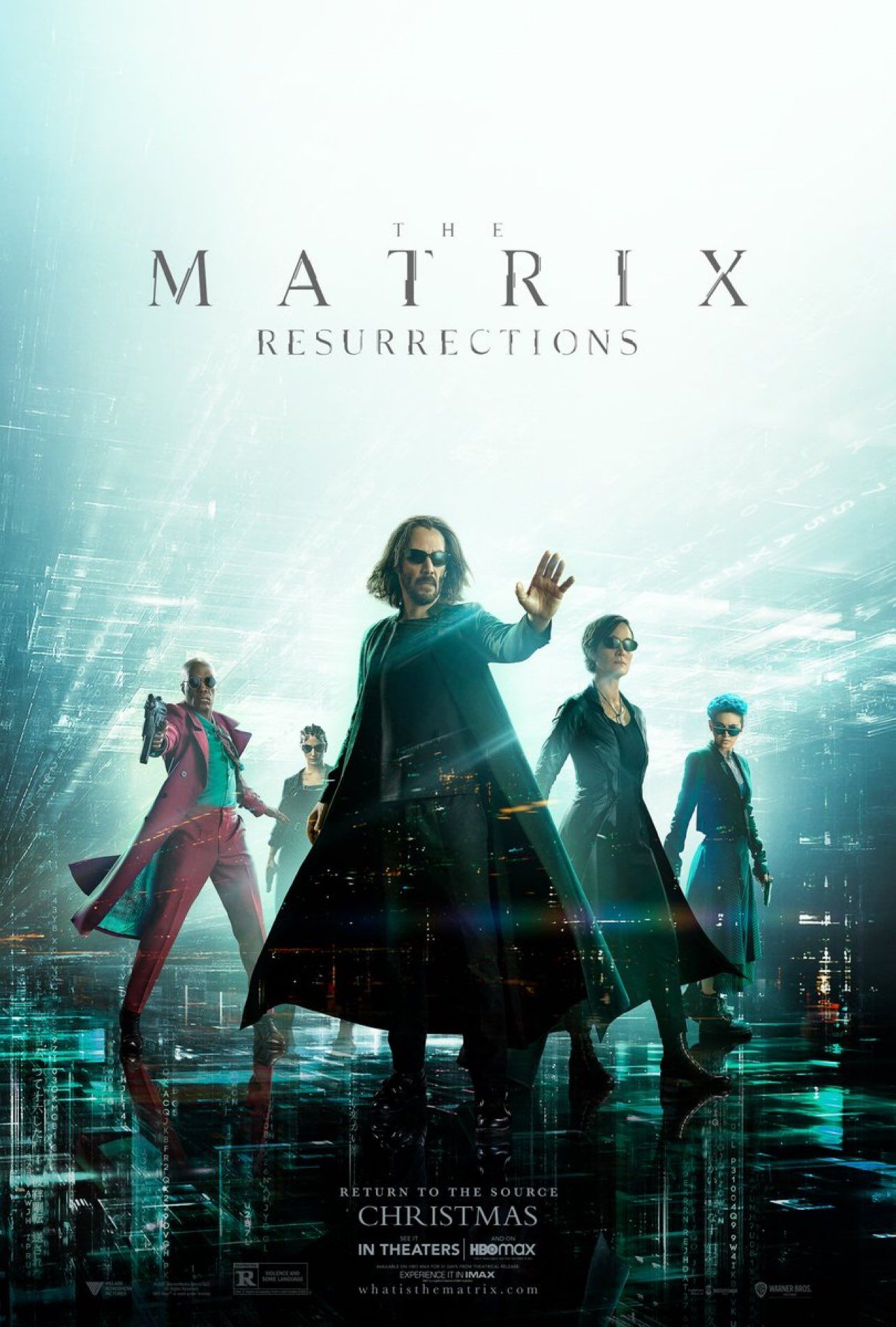The Matrix Reloaded features one of the most complex reveals in the franchise with the introduction of The Architect, but his inclusion actually makes total sense. The first of two sequels to follow the original film, The Matrix Reloaded expanded the mythos of the series with audience's first official introduction to the underground city of Zion, as well as the shocking return of Hugo Weaving's iconic villain, Mr. Smith. The film also upped the highly influential action style that made the first movie so memorable, a decision that clearly paid off in light of the movie's $741 million worldwide gross. This led to the release of a final sequel, The Matrix Revolutions, only six months later.
The story of Reloaded picks up approximately six months after the ending of The Matrix, and sees Keanu Reeves as Neo (aka The One) struggling to understand his place amidst the conflict between the machines and the last vestiges of humanity. While certain elements of the film were praised, such as the innovative and unique fight sequences as well as the expansion of the role played by the city of Zion, the movie also received some criticism for its plot, which some fans felt was intentionally vague and difficult to understand.
One of the most divisive elements of the film came from the introduction of The Architect a little over halfway into the film. Referenced and parodied dozens of times within popular culture, the scene features Neo greeted by an old man, dressed in stark white, in a room surrounded by hundreds of monitors. The old man, who audiences discover is The Architect, explains to Neo the purpose of The One within the Matrix, a reveal that isn't as neat as some people were expecting. While the initial reaction to the scene in the movie was one of confusion and misunderstanding, over the years the movie's fans have broken down exactly what the scene implies - and why it's important to the overall context of the franchise.
Who The Architect Is
The overall conflict presented in The Matrix franchise is one simple enough to understand: in the far flung future, humanity is engaged in a desperate battle for survival against a race of sentient machines who have essentially destroyed the planet. The last remaining free bastion of humanity survives underground in the city of Zion, where they strike out against the machines whenever they can while also attempting to free the other members of their race. The rest of humanity lies in an animated stasis, trapped inside the Matrix; a digital simulation of the real world as it was in 1999, designed to trick humans into a false sense of reality while the machines in the real world drain them of their bioenergy.
The animated prequel The Animatrix explains that solar-powered machines were created by humanity as a slave labor force, and eventually a massive uprising led to a war between humans and their creations. The machines inevitably ended up winning, but at the cost of most of their numbers as well as their access to the sun, which was blotted out by nanites as a last ditch effort by humanity. As a result of this, the machines designed the Matrix as a scapegoat to avoid killing the rest of humanity, while also siphoning them for their energy. To run the simulation properly, the machines created a program known as The Architect, who was responsible for the creation of the Matrix as well as its fundamental structure and maintenance. As a virtual representation of the machine database as well as an entirely logistics-based program, The Architect is the exact opposite of The Oracle, a program designed to understand and sympathize with human nature.
The Architect's Speech Explained
When Neo encounters The Architect in The Matrix Reloaded, it comes at the end of a desperate quest he embarks on to learn the true purpose of The One and hopefully end the war before Zion is destroyed. He receives word from The Oracle that he must find the Source of the Matrix in order to complete this task. With the help of Trinity, Morpheus, and a program known as The Keymaker, Neo finally makes it to the Source toward the end of the movie.
However, what he finds isn't a mystical power nor is it an off button for the machine's mainframe. Instead, he steps into a room made up entirely of television screens where he meets The Architect for the first time. The Architect drops several bombshells on Neo, the first of which being that The One was never meant to be a messianic savior for humanity, but is instead an unplanned anomaly that sprung up within the Matrix. Not only this, but Neo also discovers that the Matrix as he knows it is merely the sixth in a constantly rebooting cycle. The first simulation was designed to be a utopian paradise, but humanity outright rejected it, leading to a second simulation which added "monster" programs as well as the basic logic of cause and effect. Unfortunately, this program ended up failing as well.
Finally, The Architect realized that the component missing from the simulation was the illusion of choice; an addition that granted humans a sense of free will. This addition was added into the third cycle of the Matrix, and rresulted in a continuous destabilization of the program, which would inevitably require a total reboot of the system in a century's time. On top of this, an unexpected anomaly formed within the first system of the Matrix, one that would recur throughout each resulting cycle: a human born with the power to control the Matrix through a connection to the Source. At first The Architect tried in vain to eliminate the anomaly, but upon realizing that it couldn't be removed, The Architect set about designing a method of manipulating the anomaly and using it to inevitably bring about each reboot of the system.
The Architect's Choice & The Previous Ones
The anomaly, of course, is The One, demonstrated by Neo's control over the mechanics of the Matrix. The Architect began to work The One into the structure of the Matrix, and in turn, created the prophecy of The One in order to keep the anomaly in a predictable loop of action. The Matrix would be rebooted and the prophecy would be spread through Zion, leading the resistance on a search for The One. Once discovered, The One would then be pushed to find the Source of the Matrix, leading him back to The Architect in order to be confronted with a single decision. With each new reboot of the Matrix, the city of Zion had to be wiped out, in order to prevent humanity from growing too large in number.
To account for this, The One is presented with a choice between two doors: one leading to the Source and one leading to the Matrix. To return to the Matrix is to allow the destabilization of the system to reach a critical peak, causing a catastrophic failure resulting in the deaths of every single human connected to the simulation. However, choosing to go to the Source causes a natural reboot of the system, one in which The One is forced to choose seven males and sixteen females from the Matrix to repopulate the city of Zion and keep the cycle spinning. In every cycle of the Matrix up to the sixth, The One has always chosen the door to the Source, causing the system to be rebooted and the city of Zion to be destroyed, only to be repopulated in controllable terms under the guidance of The One.
Why Neo Chooses Differently (And What That Means)
In each of the previous versions of the Matrix, The One has been driven by a uniform blanket love for humanity (furthering the Christ allegory), a love which fuels the decision to allow Zion's destruction for the greater good of humanity. However, the sixth iteration is markedly different, as The Architect immediately notices something is radically different about Neo. This crucial difference ends up being the way his love for humanity manifests. Instead of being a total, all-encompassing love for the human race, Neo ends up attaching specifically to one human in particular: Trinity. At the time of Neo's conversation with The Architect, Trinity is jacked into the Matrix and embroiled in a fight with an Agent, a fight that leads to her falling off a building to her death. Because of this added circumstance, Neo decides to re-enter the Matrix and save Trinity, neglecting his responsibilities as The One and leaving the fate of humanity entirely undecided.
The Matrix Reloaded is all about the subversion of the expectations of the first movie. The Matrix is about Thomas Anderson escaping the illusion of structure provided by the simulation and becoming Neo, taking his fate into his own hands for the first ever time. The movie ends with him becoming The One and using those powers to embrace free will. However, The Architect reveals that the mantle of The One was never about Neo having free will, but was simply another tool used to force Neo into a predestined role he was meant to fulfill. The ending of The Matrix Reloaded is a celebration of choice; one in which Neo rejects the paths laid out for him as The One and decides to forge his own.

